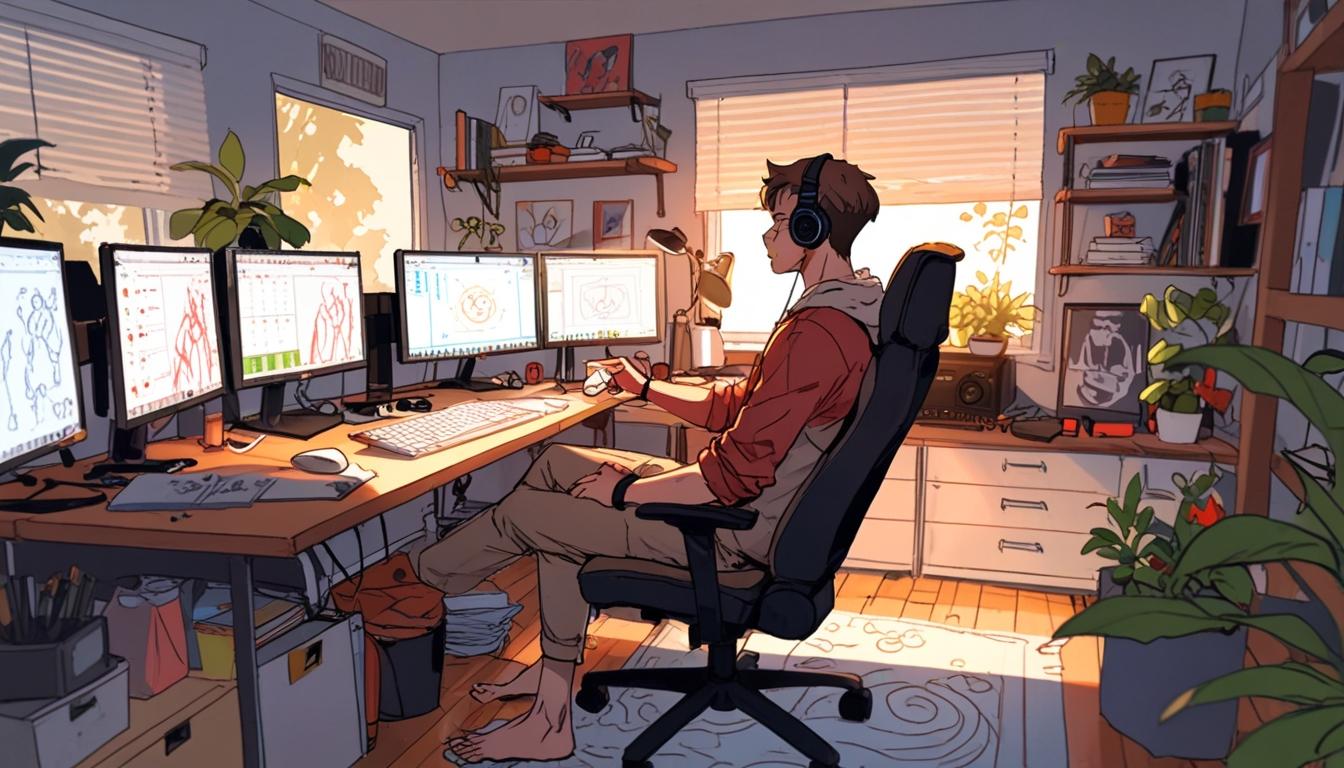Streaming has transformed from a casual pastime into a demanding full-time career, requiring streamers to balance creative output with personal well-being. As highlighted in a detailed analysis published by The Fandomentals and penned by pop culture and fandom analyst Amanda Winstead, the importance of a well-optimized home studio and proactive health strategies has become crucial for those pursuing this path professionally.
The physical environment plays a pivotal role in a streamer’s daily routine. An efficient home studio, thoughtfully designed with ergonomic furniture, optimal lighting, and carefully selected colors, can significantly boost productivity and comfort. For example, different colour schemes can influence mood and energy levels—blue fosters calmness, red energises, and yellow promotes positivity. Lighting options like ring lights and LED panels not only enhance visual appeal but also help reduce eye strain and maintain consistent branding.
Health considerations extend beyond ergonomics. The article discusses overlooked issues such as hair loss linked to stress, insomnia, and nutritional deficits common among streamers. Prolonged screen time, irregular sleep patterns, and the pressure to maintain consistent content often lead to mental fatigue, eye strain, and musculoskeletal pain. To mitigate these effects, it is recommended that streamers incorporate regular breaks, breathing exercises, short workouts, and oral hydration into their routines. Minimising the frequency of marathon live streams and avoiding stimulants like energy drinks also contributes to better health outcomes.
The mental health demands of streaming are substantial. Constant audience interaction, content creation pressures, and exposure to online criticism can result in anxiety, depression, and burnout. Moreover, the parasocial relationships formed between streamers and their fans—where viewers feel a personal connection that is not mutual—can add complexity to a streamer’s psychological experience. The article recommends setting firm boundaries, using chat moderation tools to manage toxicity, and cultivating offline hobbies to maintain mental resilience.
Practical safety measures are also advised, such as acquiring first aid and cardiopulmonary resuscitation (CPR) skills. Since streamers often operate alone for extended periods, the awareness and preparedness to respond to emergencies—including having essential medical supplies and a trusted contact monitoring streams—are critical for safety.
Community engagement stands out as a positive aspect of streaming. Building supportive and respectful fandom spaces not only benefits the audience but also provides emotional support for streamers. Platforms like Discord and subscriber-only streams enable strong communal ties, which can contribute to emotional well-being.
Accessibility in streaming content is another key focus. Incorporating features such as captions, voice commands, adjustable fonts, and colourblind-friendly designs enhances inclusivity. Such measures ensure that content is enjoyable and accessible to a diverse viewership.
Finally, sustainable streaming practices emphasise balancing streaming schedules—ideally three to four days weekly, with sessions no longer than five hours—and maintaining boundaries with audiences regarding communication and content sharing. Mental health practices including journaling, social connections, digital detoxes, and prioritising personal growth aid streamers in sustaining a fulfilling career in this evolving landscape of digital entertainment.
The Fandomentals report provides a comprehensive look at the complexities of the professional streaming world, underlining that success in this career involves much more than simply being online; it requires attention to both physical setup and holistic well-being.
Source: Noah Wire Services
